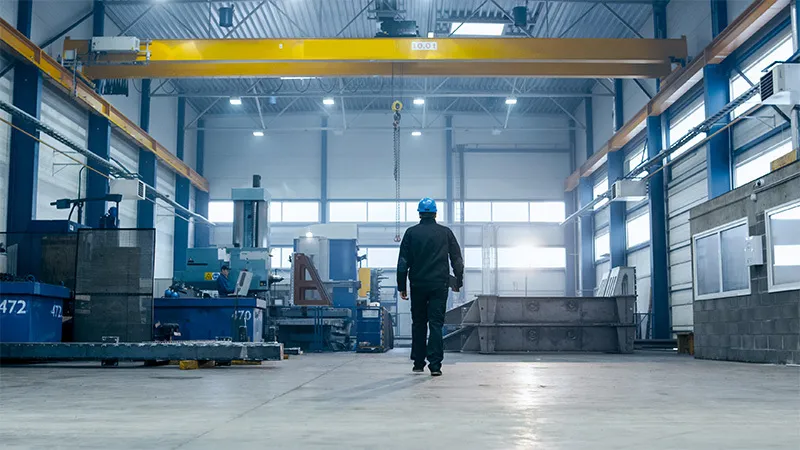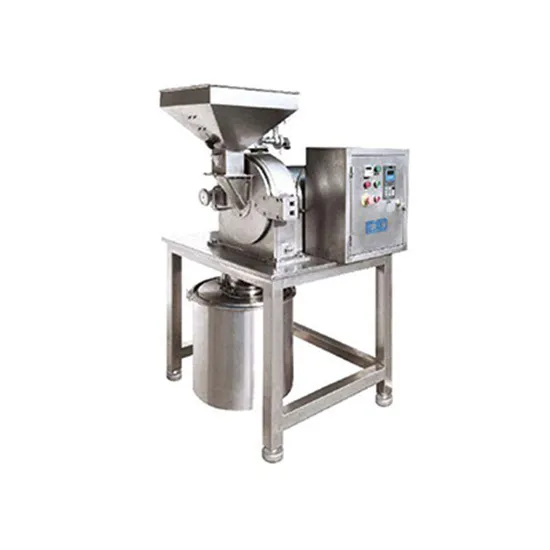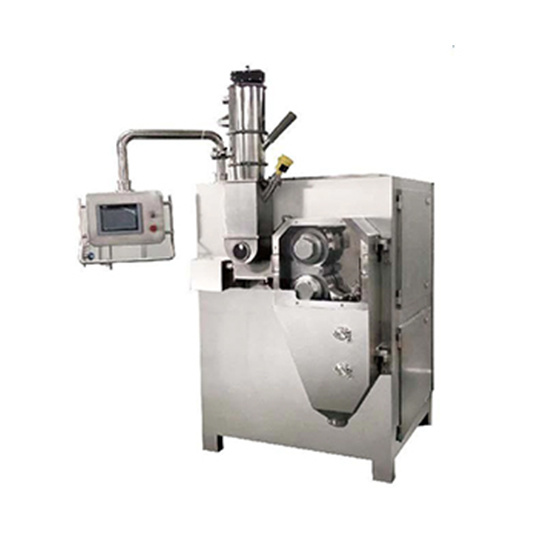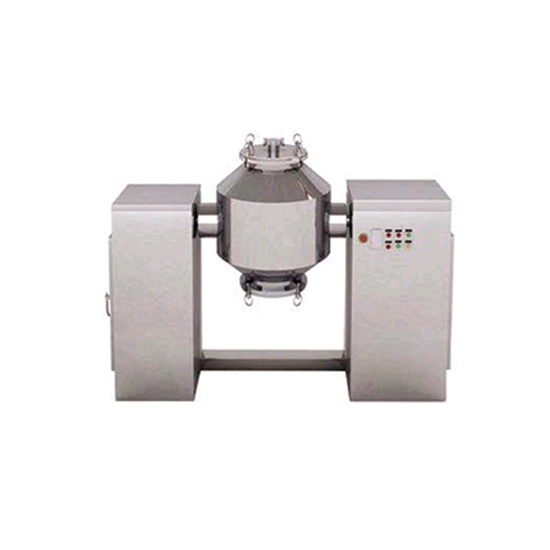NEWS
Understanding the Various Grinding Mechanisms in Spice Pulverizer Machines for Optimal Performance
Oct 17,2025
Understanding the Different Grinding Mechanisms in Spice Pulverizer Machines
Table of Contents
- 1. Introduction to Spice Pulverizer Machines
- 2. Importance of Grinding Mechanisms in Spice Processing
- 3. Types of Grinding Mechanisms Used in Spice Pulverizers
- 3.1 Impact Grinding Mechanism
- 3.2 Attrition Grinding Mechanism
- 3.3 Shear Grinding Mechanism
- 3.4 Compression Grinding Mechanism
- 4. Choosing the Right Grinding Mechanism for Your Application
- 5. Maintenance Tips for Spice Pulverizer Machines
- 6. Common Mistakes to Avoid in Spice Grinding
- 7. The Future of Spice Grinding Technology
- 8. Frequently Asked Questions
- 9. Conclusion
1. Introduction to Spice Pulverizer Machines
In the realm of food processing, **spice pulverizer machines** play a pivotal role. These machines are engineered to transform whole spices into fine powders, ensuring maximum flavor and aroma retention. Understanding the various grinding mechanisms employed in these machines is essential for anyone involved in spice production or culinary arts. With the right knowledge, you can optimize the grinding process, enhance product quality, and increase efficiency.
2. Importance of Grinding Mechanisms in Spice Processing
The grinding mechanism significantly influences the **quality of spices**, affecting several factors such as particle size, grind consistency, and flavor extraction. Different spices have unique physical properties, and therefore, the choice of grinding mechanism can either enhance or diminish their qualities.
For instance, a proper grinding technique can release essential oils in spices, unlocking their flavor potential. Conversely, improper grinding may lead to undesirable heat generation, which can degrade the spice quality. This section will delve into why understanding these mechanisms is paramount for both manufacturers and culinary experts.
3. Types of Grinding Mechanisms Used in Spice Pulverizers
Various grinding mechanisms are utilized in spice pulverizers, each with its unique advantages and applications. Understanding these methods will help you make informed decisions when selecting equipment for your spice processing needs.
3.1 Impact Grinding Mechanism
**Impact grinding** is one of the most common mechanisms found in spice pulverizers. This method involves the use of high-speed blades or hammers that apply force to the spices, breaking them apart upon impact.
- **Advantages**:
- Quick processing times
- Ability to handle hard spices like cardamom and cloves
- Produces a fine, consistent grind
- **Applications**: Impact grinding is ideal for spices that require a fine powder, such as black pepper and cinnamon.
3.2 Attrition Grinding Mechanism
**Attrition grinding** relies on the friction created between two surfaces. In this method, spices are crushed between a stationary and a moving surface, leading to a gradual size reduction.
- **Advantages**:
- Excellent for achieving a uniform particle size
- Minimal heat generation, preserving flavor compounds
- **Applications**: Suitable for softer spices and herbs, including turmeric and coriander, attrition grinding is favored in settings where spice integrity is paramount.
3.3 Shear Grinding Mechanism
The **shear grinding** mechanism utilizes a combination of cutting and grinding forces to reduce spice particle size. This method often involves sharp blades that slice through the spices rather than crushing them.
- **Advantages**:
- Effective for fibrous or bulky spices
- Offers flexibility in achieving different textures
- **Applications**: Ideal for spices like ginger and garlic, where a fibrous texture needs to be processed without excessive heat.
3.4 Compression Grinding Mechanism
In **compression grinding**, spices are subjected to high pressure, leading to particle size reduction. This method is less common in spice pulverizers but can be effective for specific applications.
- **Advantages**:
- Efficient for creating powders from larger spice pieces
- Can lead to a unique texture
- **Applications**: Compression grinding is often used in the production of spice blends or products requiring a coarse texture.
4. Choosing the Right Grinding Mechanism for Your Application
Selecting the appropriate grinding mechanism involves understanding the characteristics of the spices you are working with and the desired end product. Here are some essential considerations:
- **Spice Type**: Different spices will respond better to specific grinding techniques. For instance, hard spices may require impact grinding, while softer spices benefit from attrition methods.
- **Desired Particle Size**: Determine the preferred particle size for your application. Fine powders are often better achieved through impact or attrition grinding, whereas coarser textures might be suited to compression or shear methods.
- **Production Volume**: Consider your production needs. High-volume processes may necessitate more robust and faster grinding mechanisms, while smaller batches can allow for more specialized equipment.
- **Cost and Maintenance**: Evaluate the cost of the machinery and its maintenance requirements. Some grinding mechanisms may require more frequent upkeep or replacement parts, impacting your overall investment.
5. Maintenance Tips for Spice Pulverizer Machines
To ensure the longevity and efficiency of your spice pulverizer machines, regular maintenance is crucial. Here are some best practices:
- **Clean Regularly**: Residue buildup can affect machine performance. Clean the grinding chamber and components after each use to prevent contamination and preserve flavor.
- **Inspect Blades and Hammers**: Regularly check blades and hammers for wear and tear. Dull edges can lead to inefficient grinding and increased heat generation.
- **Monitor Motor Performance**: Keep an eye on the motor's performance. Any unusual sounds or vibrations can indicate underlying issues that need immediate attention.
- **Lubricate Moving Parts**: Ensure that all moving components are adequately lubricated to prevent wear and tear, which can lead to costly repairs.
- **Follow Manufacturer Guidelines**: Always adhere to the manufacturer's recommendations for maintenance schedules and procedures to optimize machine performance.
6. Common Mistakes to Avoid in Spice Grinding
While grinding spices may seem straightforward, several common mistakes can hinder the effectiveness of your process. Here are key pitfalls to avoid:
- **Ignoring Spice Properties**: Failing to consider the hardness or moisture content of spices can lead to inappropriate grinding methods and subpar results.
- **Overheating**: Excessive grinding speeds can generate heat that degrades spice quality. Always monitor grinding time and speed to maintain optimal temperatures.
- **Inconsistent Feed Rate**: Irregularly feeding spices into the grinder can result in uneven particle size. Aim for a steady feed rate for consistent results.
- **Neglecting Maintenance**: Skipping regular maintenance can lead to machinery breakdowns and compromised product quality. Establish a routine maintenance schedule to avoid these issues.
- **Using Dull Blades**: Dull blades can slow down the grinding process and produce inconsistent particle sizes. Ensure blades are sharpened or replaced as needed.
7. The Future of Spice Grinding Technology
As technology continues to evolve, so does the spice grinding industry. Innovations in machinery design, materials, and grinding techniques are paving the way for enhanced efficiency and product quality. Future trends may include:
- **Smart Technology**: Integration of IoT technology for real-time monitoring and data collection, allowing for more precise control over grinding processes.
- **Sustainability**: Increased focus on environmentally friendly machinery that minimizes waste and energy consumption.
- **Advanced Materials**: Development of new materials that enhance grinder durability and efficiency, leading to longer lifespans and reduced maintenance.
- **Customization**: More options for custom grinding solutions tailored to meet specific customer needs and spice characteristics.
8. Frequently Asked Questions
What factors should I consider when choosing a spice pulverizer machine?
Consider the type of spices you will be grinding, the desired particle size, your production volume, and maintenance requirements.
Can I use the same pulverizer for different spices?
While it's possible, it’s advisable to clean the machine thoroughly between uses to prevent flavor cross-contamination.
How can I ensure the best flavor retention in spices during grinding?
Use lower grinding speeds to minimize heat generation and choose appropriate grinding mechanisms for specific spices.
What maintenance is required for spice pulverizer machines?
Regular cleaning, checking for wear and tear, lubricating moving parts, and following manufacturer guidelines are essential for maintenance.
Are there specific grinding methods for different types of spices?
Yes, hard spices may benefit from impact grinding, while softer spices are better suited for attrition grinding.
9. Conclusion
Understanding the different grinding mechanisms in spice pulverizer machines is crucial for optimizing spice processing and ensuring product quality. By selecting the right mechanism based on the type of spices, desired particle size, and production needs, you can enhance flavor, aroma, and efficiency. As technology advances, keeping abreast of new developments will further improve your spice grinding operations. With this knowledge, you are now equipped to make informed decisions that elevate your spice processing endeavors to new heights.
More News










